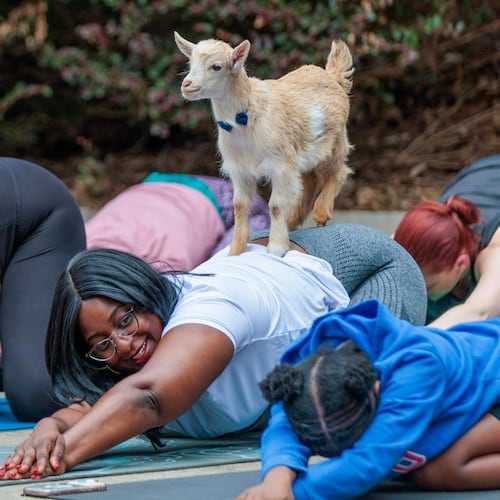Nothing can quite compare to an all-afternoon ramble through a great showplace like New York’s Museum of Modern Art. Yet the just-opened High Museum of Art exhibition “Picasso to Warhol: Fourteen Modern Masters” offers some advantages over a visit to the Manhattan mothership beyond the airfare savings.
The High is billing the 129-work exhibit as one of the largest concentrations of modern art masterpieces ever to be exhibited in the Southeast. And while the masterwork-studded survey show is a sliver of MoMA’s deep permanent collection, concentrating the experience into an exhibit that can be viewed on one Wieland Pavilion floor emphasizes the connections between some of the 20th century’s most potent art-makers.
“While many of these iconic works are on view often at MoMA, they perhaps never have been organized in this way,” High curator of modern and contemporary art Michael Rooks said. He noted that MoMA show curator Jodi Hauptman and her New York colleagues have been struck by “the kinds of formal parallels, and rhymes and influences and responses that happen between and among the artists.”
One prime example he cites: the way Joan Miró’s organic shapes influenced Jackson Pollock, whose almost random way of painting is mirrored in Jasper Johns’ 1930 “Map,” an extremely loose rendering of the continental United States. A museum visitor can stand in one place in the gallery and feel the vibrations of inspiration radiating among the trio, Rooks said.
“It’s an amazing painting and has a great monumentality when you walk into the gallery,” Rooks said. “I think a lot of people are surprised by the size of each individual painting [20 inches by 16 inches each]. Together, they form this kind of frieze in a way.”
When the 32 paintings, representing every flavor in the Campbell’s line, were first shown in 1962 at a Los Angeles gallery, they were lined on shelves, as if on display in a grocery. The artist’s idea was “to underscore the sense of ordinariness,” the curator said.
Nearly half a century later, it’s hard to know how much the work was intended as homage and how far Warhol’s tongue was planted in cheek.
“It’s such a common consumer product ... that we don’t think of it in terms of the monumental and heroic,” Rooks said. It’s more a celebration of “the ordinary, not the extraordinary,” the curator added.
Yet Warhol, who grew up in lower-middle-class Pittsburgh, quite appreciated Campbell’s. “I used to drink it,” he once recalled of the canned soup. “I used to have the same lunch every day, for 20 years I guess, the same thing over and over again.”
Still, it’s doubtless that Warhol was tweaking consumerism and, by repeating the same basic banal image at the same scale, riffing on the manipulations of advertising.
Warhol became known as such a master of the silkscreen process and other forms of reproduction, that Rooks believes many will be surprised that each canvas in “Campbell’s Soup Cans” is an original, completed with the help of studio assistants, and not a print.
“They look like they were made using mechanical reproduction, and that’s pop,” said Rooks, noting that Warhol soon thereafter moved to multiples. “They are subtle differences in each painting, which are kind of fun to find.”
On view
“Picasso to Warhol: Fourteen Modern Masters”
Through April 29, 2012; 10 a.m.-5 p.m. Tuesdays-Saturdays; until 8 p.m. Thursdays; noon-5 p.m. Sundays. $18; $15, students and seniors; $11, ages 6-17; free, children 5 and younger and members. High Museum of Art, 1280 Peachtree St. N.E., Atlanta. 404-733-4444, www.high.org.
About the Author
Keep Reading
The Latest
Featured

